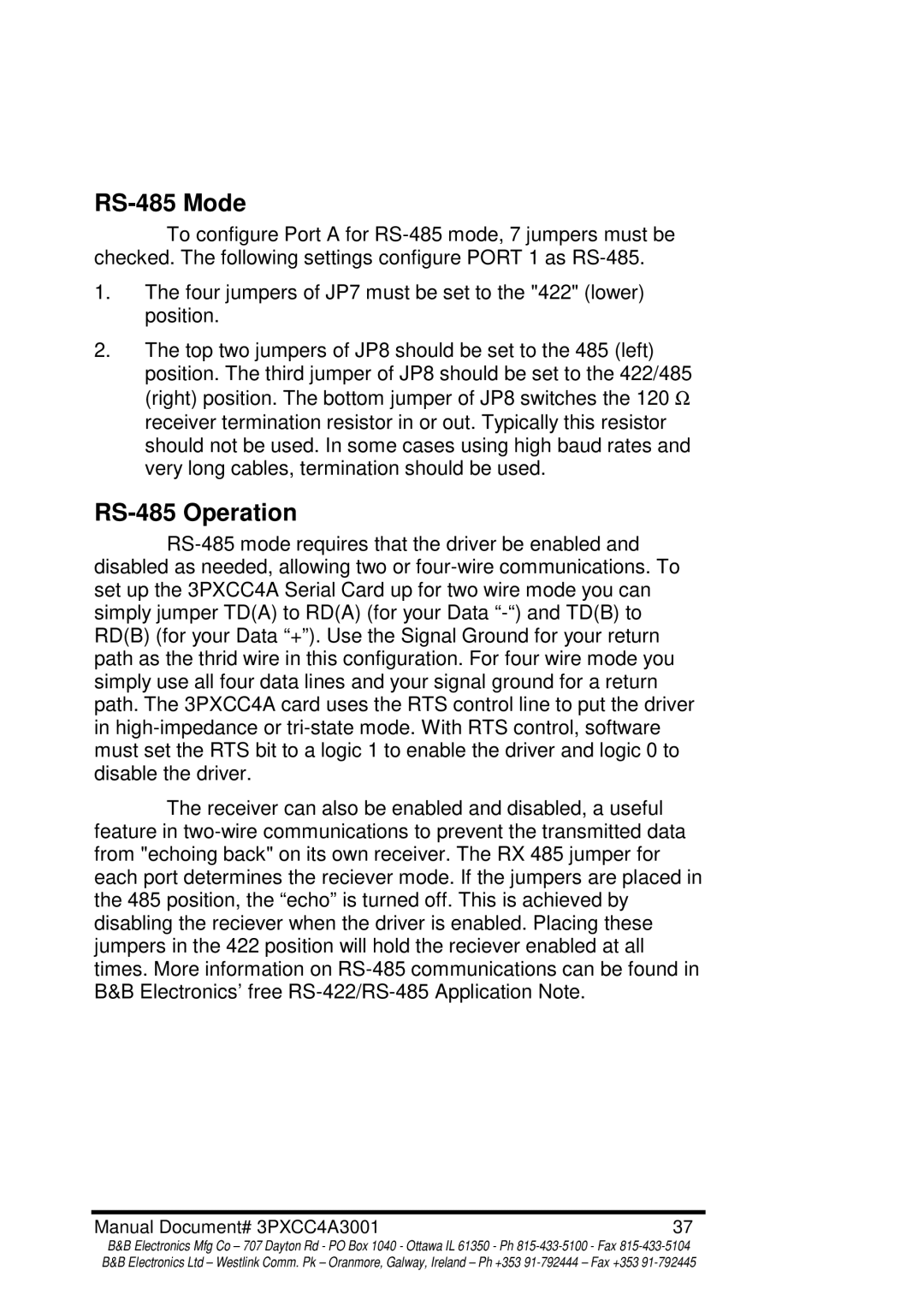RS-485 Mode
To configure Port A for RS-485 mode, 7 jumpers must be checked. The following settings configure PORT 1 as RS-485.
1.The four jumpers of JP7 must be set to the "422" (lower) position.
2.The top two jumpers of JP8 should be set to the 485 (left)
position. The third jumper of JP8 should be set to the 422/485 (right) position. The bottom jumper of JP8 switches the 120 Ω receiver termination resistor in or out. Typically this resistor should not be used. In some cases using high baud rates and very long cables, termination should be used.
RS-485 Operation
RS-485 mode requires that the driver be enabled and disabled as needed, allowing two or four-wire communications. To set up the 3PXCC4A Serial Card up for two wire mode you can simply jumper TD(A) to RD(A) (for your Data “-“) and TD(B) to RD(B) (for your Data “+”). Use the Signal Ground for your return path as the thrid wire in this configuration. For four wire mode you simply use all four data lines and your signal ground for a return path. The 3PXCC4A card uses the RTS control line to put the driver in high-impedance or tri-state mode. With RTS control, software must set the RTS bit to a logic 1 to enable the driver and logic 0 to disable the driver.
The receiver can also be enabled and disabled, a useful feature in two-wire communications to prevent the transmitted data from "echoing back" on its own receiver. The RX 485 jumper for each port determines the reciever mode. If the jumpers are placed in the 485 position, the “echo” is turned off. This is achieved by disabling the reciever when the driver is enabled. Placing these jumpers in the 422 position will hold the reciever enabled at all times. More information on RS-485 communications can be found in B&B Electronics’ free RS-422/RS-485 Application Note.
Manual Document# 3PXCC4A3001 | 37 |
B&B Electronics Mfg Co – 707 Dayton Rd - PO Box 1040 - Ottawa IL 61350 - Ph 815-433-5100 - Fax 815-433-5104 B&B Electronics Ltd – Westlink Comm. Pk – Oranmore, Galway, Ireland – Ph +353 91-792444 – Fax +353 91-792445
